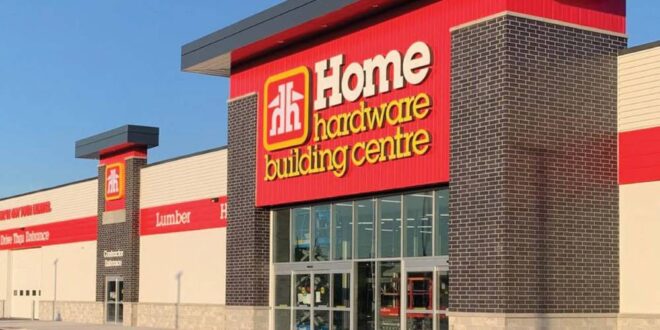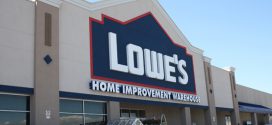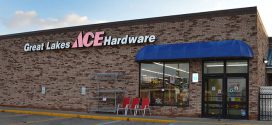This is one of a series of case studies into why training is important and the tangible results it can have on your business. Click Here to read other case studies.
If there’s ever a question as to the effectiveness of employee training at Geerlinks Home Hardware Building Centre, general manager Doug Vannoord just points to the numbers.
“We’ve seen sales increases anywhere from 8.7 to 12.7 percent in every department since we started training,” he says.
As someone who helped implement a training program at Geerlink’s three locations, Vannoord sees first-hand how it makes a difference not only financially, but also in employee retention, morale and customer service. Getting those kinds of results requires investment, careful management and leadership giving their full support to the program.
The Challenge
Prior to 2022, there was not a formalized and consistent onboarding program at Geerlinks Home Hardware Building Centre. The company was missing sales because employees may not have had all of the product knowledge they needed, and were not always crosstrained in multiple departments.
The Solution
Understanding the need for more consistency in their approach to educating their employees, owners of the company asked Vannoord if he would create a better training path for all employees. Geerlinks has three locations in Ontario: Geerlinks Home
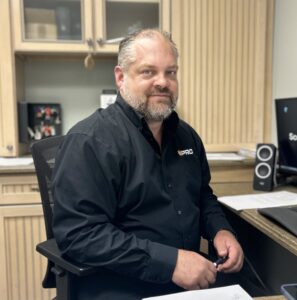
Hardware Building Centre and Design Gallery in St. Thomas; Komoka Kilworth Home Hardware Building Centre in Komoka; and Port Stanley Home Hardware in Port Stanley. There are approximately 225 employees across all locations, with most of them in the 45,000-square-feet St. Thomas store. Managing training for that many people is practically a full-time job, so Vannoord promoted an additional staff member, Kelly Taylor, dedicated to training and HR functions. She uses a spreadsheet to track which courses students need to take and when they’ve taken them.
Consistent Onboarding
Every new hire at Geerlinks understands from the start that training will be a major component of their first 90 days. Vannoord says being on the salesfloor eight hours a day during their first few weeks can be overwhelming for a new hire, so he splits their time between four hours of online training and four hours on the salesfloor. The online training consists largely of product knowledge from the North American Hardware and Paint Association’s (NHPA) courses, including the Basic Training in Hardware Retailing and Basic Training in Building Materials Retailing. Through these courses, employees first focus on the knowledge they need to work in their primary department. Vannoord says they must get their initial batch of training done in their first 60 days, because he wants them to be ready for their 90-day review.
“We rely very heavily on the NHPA courses and that is our foremost source for training,” he says. “Those courses are offered online and once they get through that, managers in each department are responsible for getting people hands-on training.”
Hands-on training is where employees get to handle the product, understand how to use it and understand how to sell it. New hires are paired with a mentor who is their go-to person for asking questions and discussing what they’ve learned.
Crosstraining
After they have settled into their department, Vannoord begins crosstraining them in other areas. He wants every employee to be knowledgeable and confident enough to help customers in multiple departments. While they’ll no longer be spending half their day in the training room, employees still have a curriculum of courses they are required to take. They will be engaged in some type of training year-round, says Vannoord. The biggest push for training is generally September through May, before the busy spring and summer selling seasons. In addition to finishing all of the courses offered by NHPA, employees also take courses in safety, offered by their wholesaler.
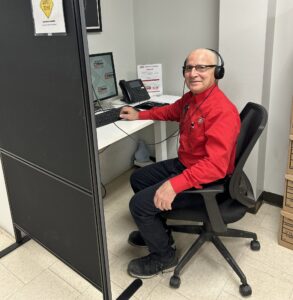
Scheduled Time to Train
Each store has a training room with two computers where employees can take their training, or they can take it at home. Either way, Vannoord pays for the time spent training. He knows how long it takes to complete a module, so he can keep employees accountable for the time they spend. Kelly assigns the training curriculum, then it’s up to department managers to carve out time in the schedule for their team to complete their required modules. Vannoord estimates that Kelly spends approximately 10 hours a week coordinating training. Across all 225 employees, total time spent training averages about 20 hours each week, which is a small investment considering the return, he says.
Support from Company Leadership
In order for training to be effective, it’s important for everyone up the chain of command in the company to validate it. Employees must understand that time spent taking a product knowledge course online or attending a seminar is worthwhile and important to the company. Managers and owners can validate that importance by having simple conversations with employees about what they’ve learned. Thank them for the effort they put in. Find ways to show them you care that they are learning, Vannoord says.
Understanding the importance of reinforcement, Vannoord is strategic in how he assigns training within departments. For example, when employees in the paint department are finished taking the paint-related modules, he begins crosstraining by assigning several of them to the same courses in another category. If they’re all taking a plumbing course, then they can talk about those courses while they’re working, providing another bit of reinforcement to what they’re learning.
Vanoorrd suggests managers also take all the training employees are taking so they understand the material, then initiate simple conversations about those training topics.
“Following-up can be as simple as asking, ‘what did you learn?’ or what do you think about what you learned?’. If there’s no interaction between the leaders and the people training, then the person learning may not think it’s worthwhile,” he says. “The leaders must be engaged in training, because if they’re not engaged, then the staff won’t be either.”

The Results
Over the past few years, there’s been a greater emphasis on having a more formalized training program at Geerlinks. Vannoord, who has the perspective of 15 years with the company, says there is clear proof the program has been working.
“In 2022 and 2023 when we first started intentionally training, we purposely didn’t train in one department, just to see what would happen,” he says. “That department, our millwork section, was the only area where we didn’t see a sales increase. Every other area in the store had between 8.6 and 12.6 percent sales increases.”
Add-on sales have increased because employees are better equipped to talk intelligently about the products they are selling, he says. They are also more confident when engaging customers, in large part due to his emphasis on cross training over several departments.
“For example, we intentionally train people in paint in the seasonal area, which is right next to the paint department,” he says. “So when staff in paint see a customer wandering around the seasonal area, they’re not afraid to approach that customer because they know the basics of that department. Instead of hiding in an aisle when they see a customer, employees are engaging them.”
Because he knows that training pays off in higher sales, Vannoord says he can justify keeping staff even during slower months of the year.
“Even if we’re at a point where it might make sense to lay off people because business is slow, we’ve been able to justify keeping them on and spending that down time training because we know that the eventual result will be increased sales,” he says. “We keep people employed and they are grateful, which leads to better employee morale.”

Increasing employee retention also cuts recruitment costs, another big payoff for training. He’s also noticed that at least among the younger generation, there is a basic expectation that they will get training when they take the job.
“Employees love it when we invest in them, and training is investing in your employees,” he says. “When we give them the tools to be confident in what they are selling, they’re more comfortable on the salesfloor and they’re happier. And when people are happy, they tend to stay where they are.”
Conversely, employees who are unhappy or do not feel prepared to do their job successfully are likely to leave. Simply letting them learn on the job without dedicated time for teaching the skills and knowledge they need dooms them to failure.
“For an employer not to train and expect someone to learn on the job is asking for problems and turnover. It’s not good customer service either,” he says.
 Hardware Retailing The Industry's Source for Insights and Information
Hardware Retailing The Industry's Source for Insights and Information



